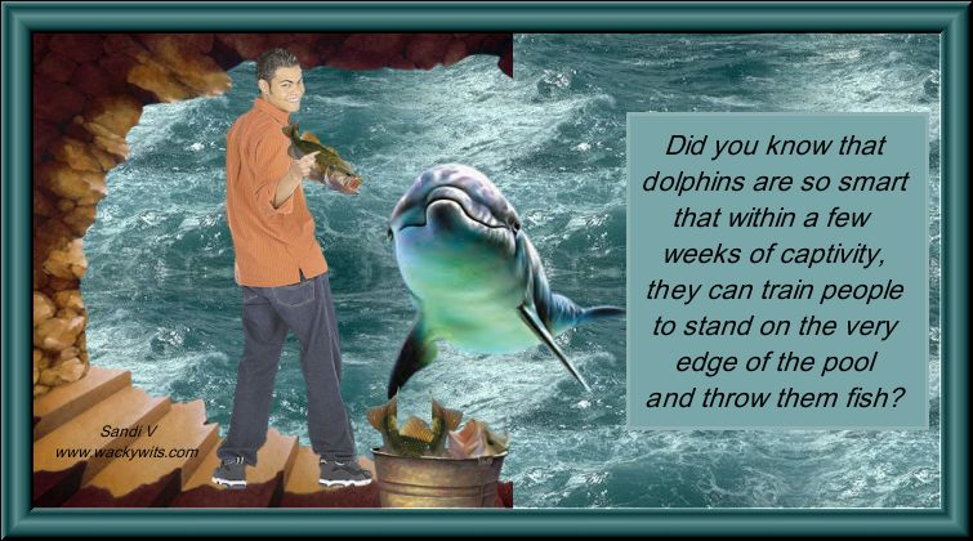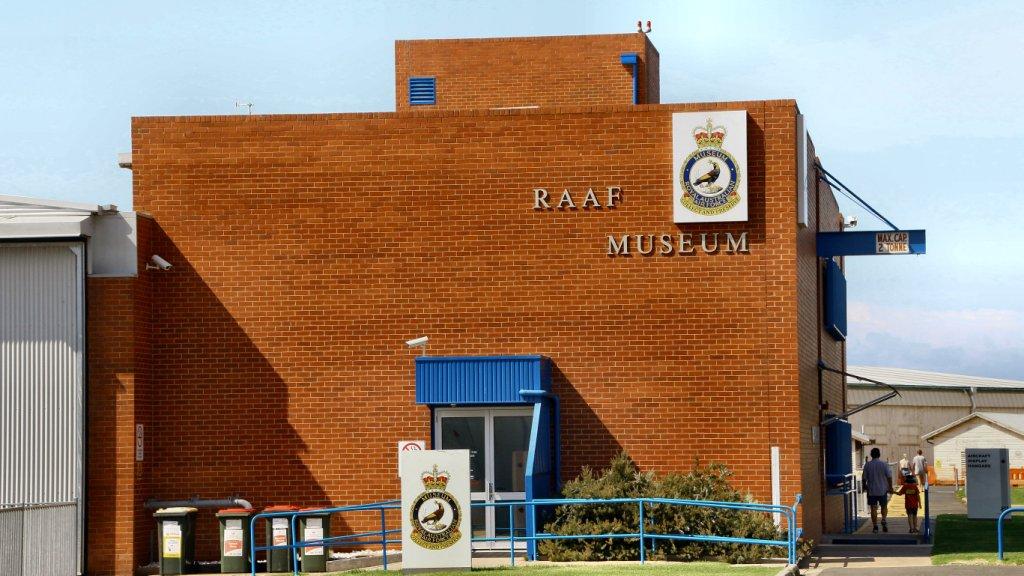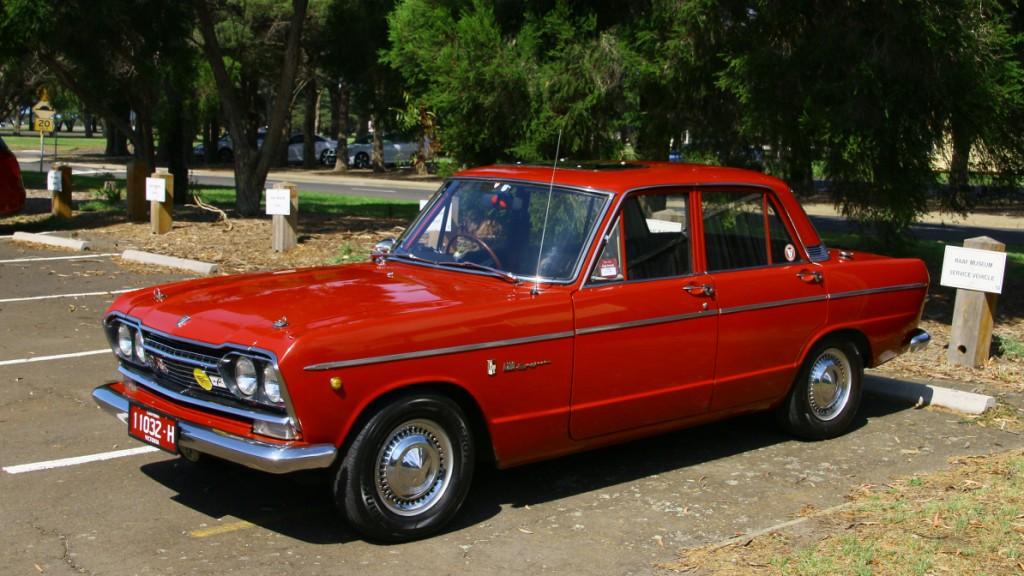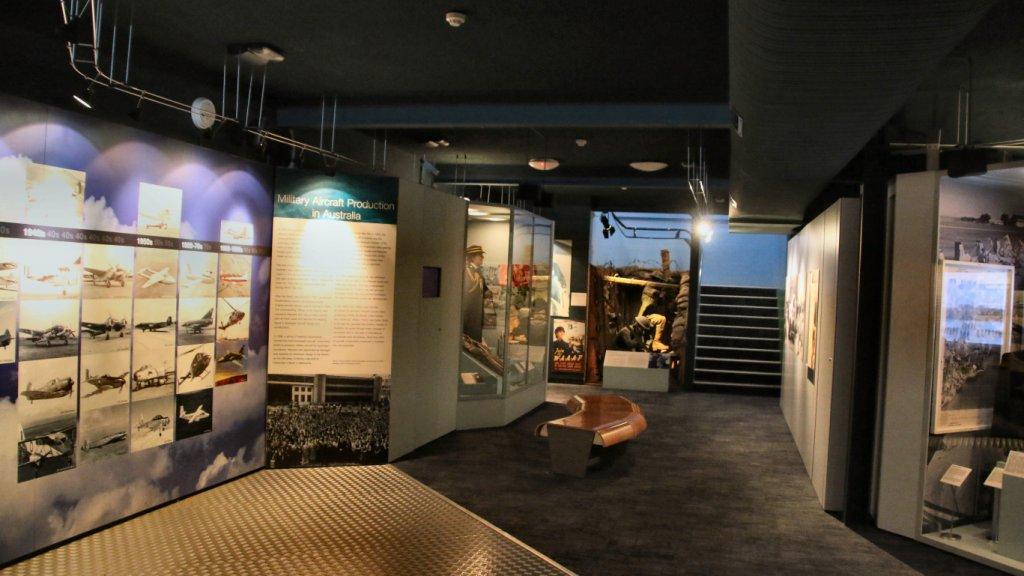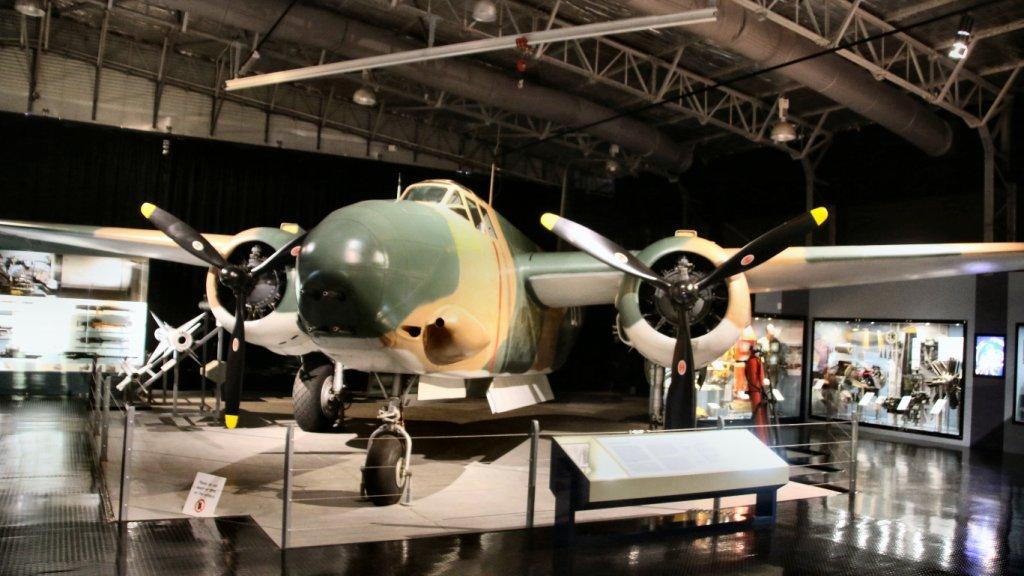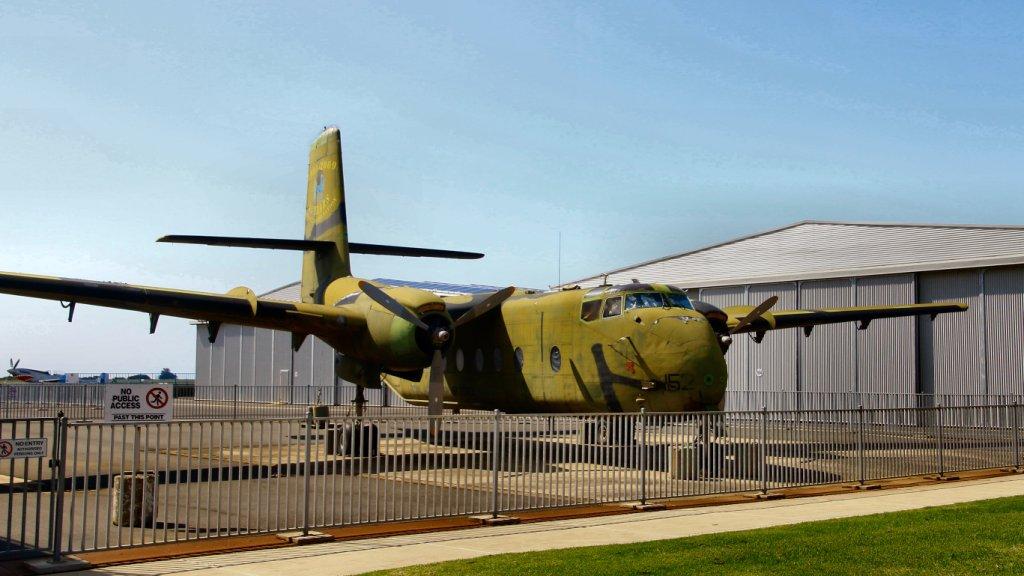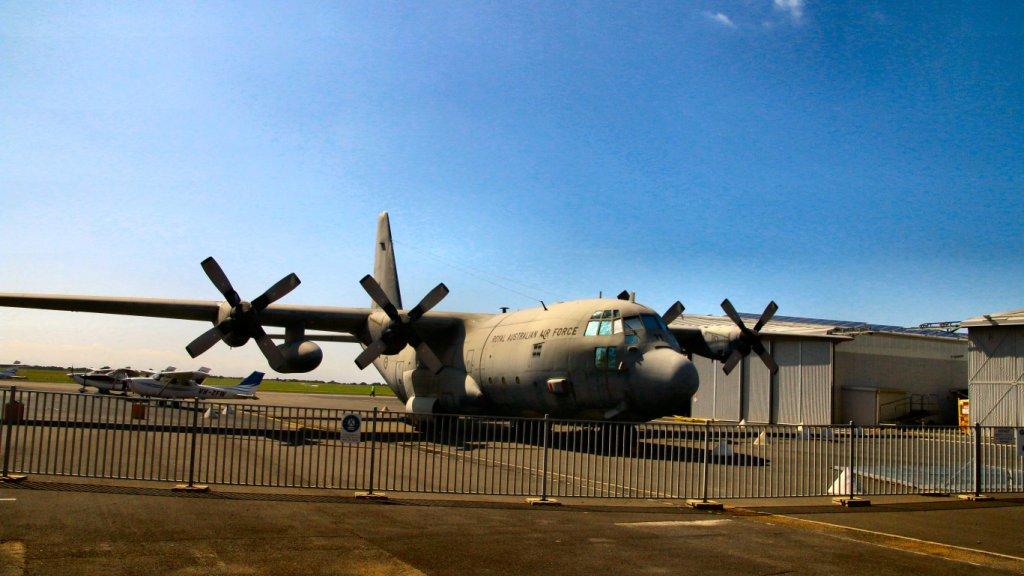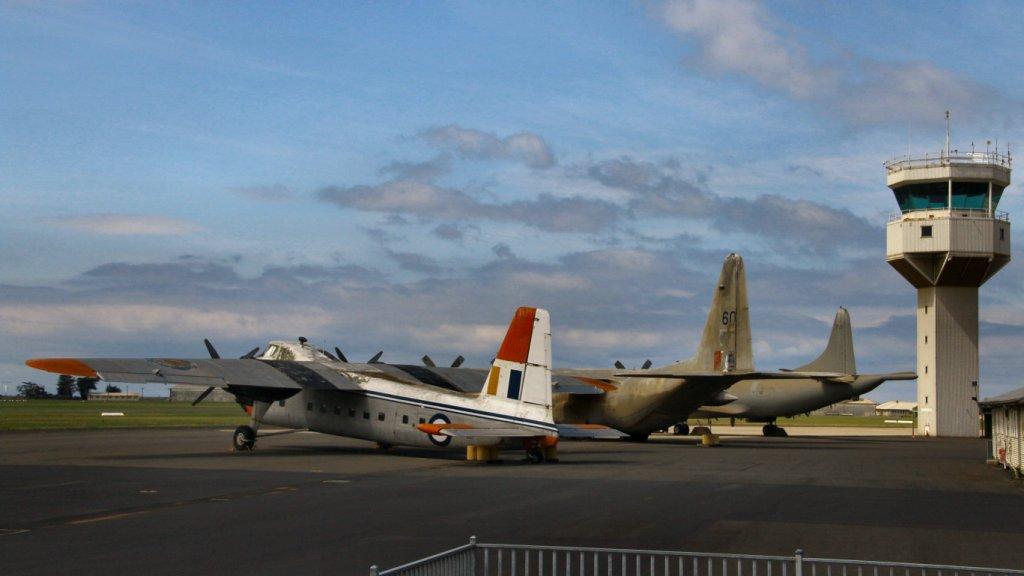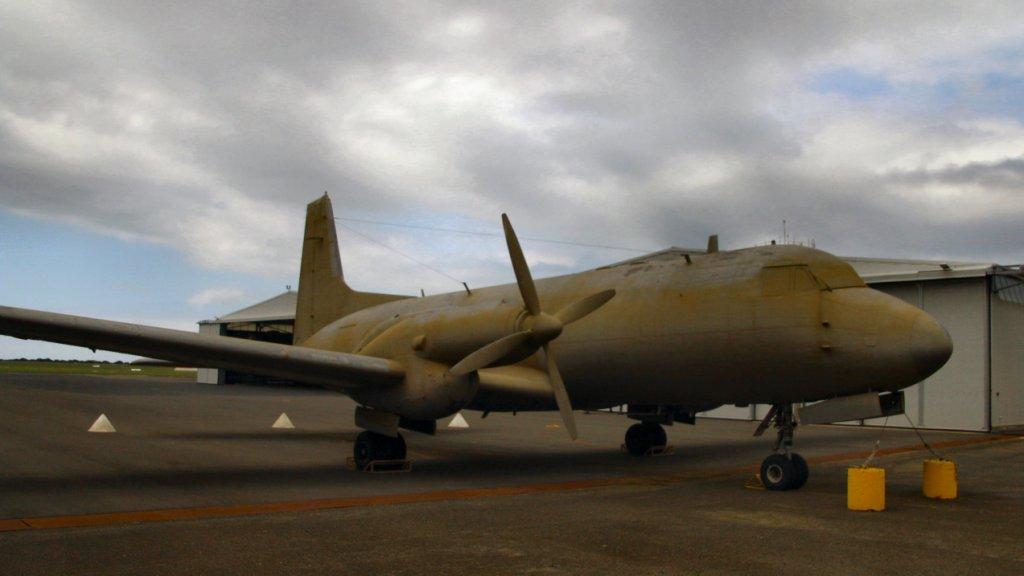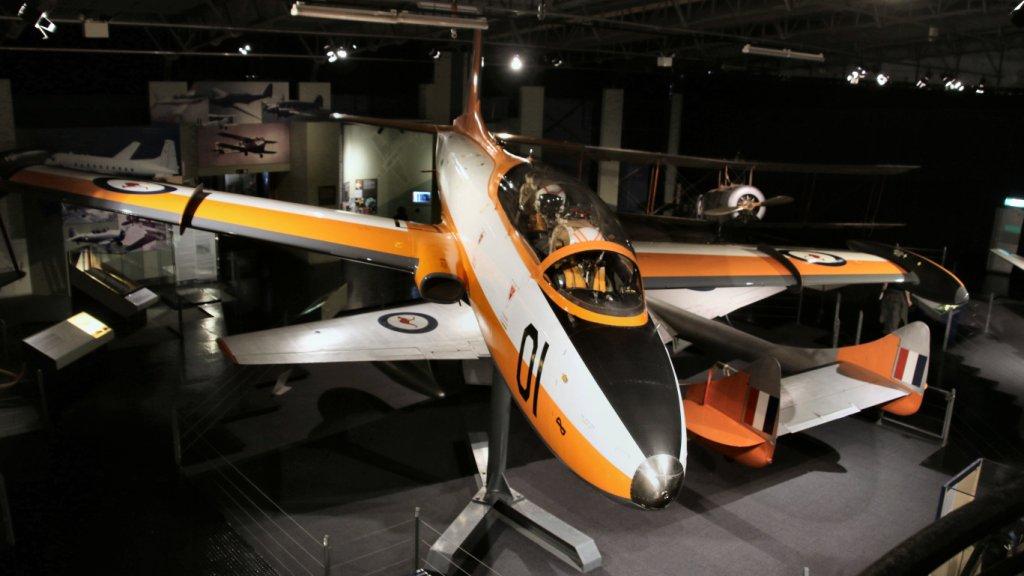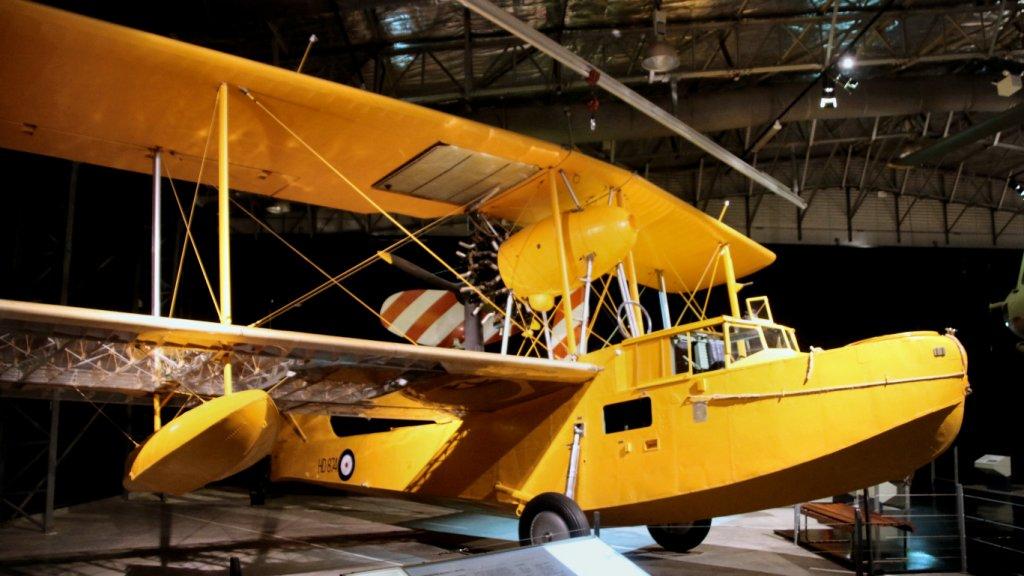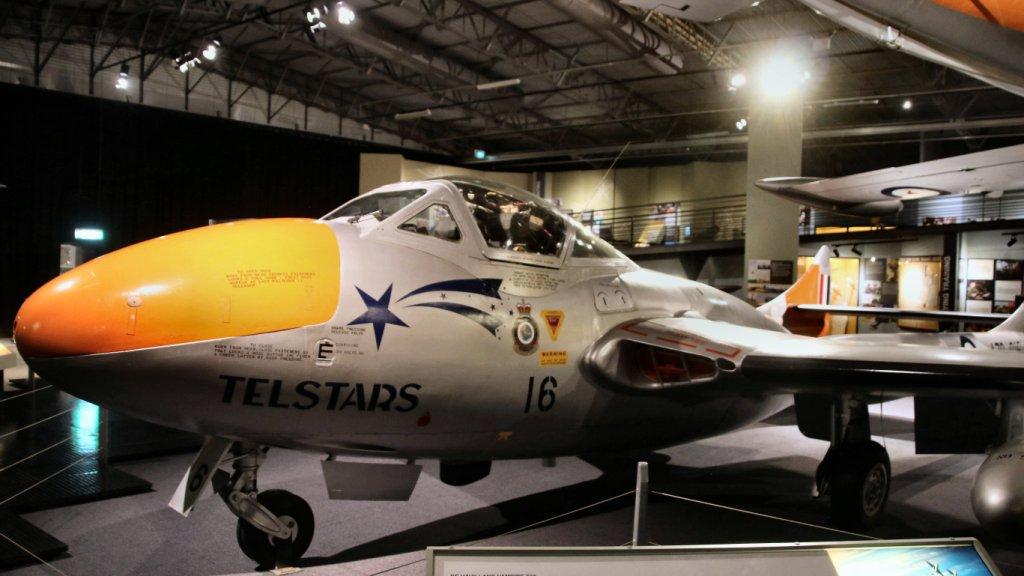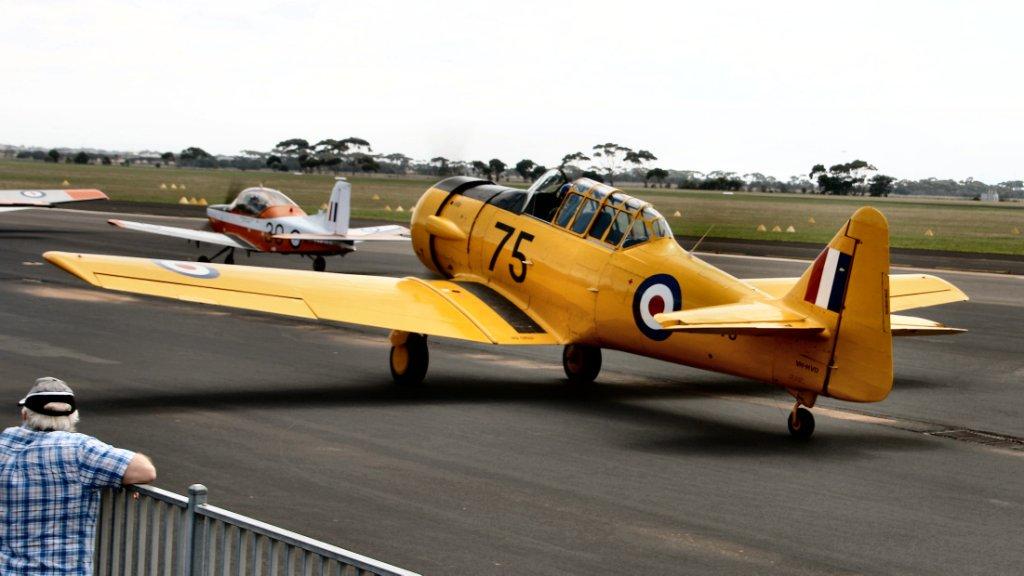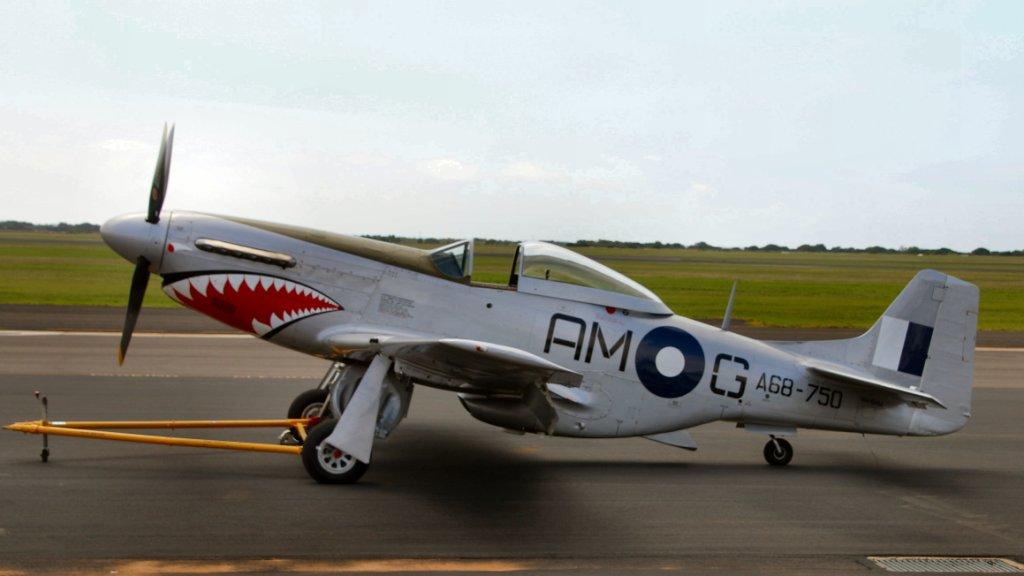
|
Vol 69 |
Page 13 |
Privacy Policy | Editorial Policy | Profit Policy | Join the Association | List of Members | Contact us | Index | Links
Back Go to page: 1 2 3 4 5 6 7 8 9 10 11 12 13 14 15 16 17 18 19 20 Forward
Most of the pics in this story have been crunched to allow the page to open quickly. You can get the HD version by clicking each pic.
Contents:
Aircraft;
| Bristol Freighter A81-1 | De Havilland Vampire | Douglas Boston |
| C-130E A97-160 | C130H A97-011 | Caribou A4-152 |
| Harvard | HS-748 A10-601 | Mustang A68-750 |
| Orion P3C A9-751 | Supermarine Seagull |
The Museum at Point Cook is the official museum of the RAAF, which, after the RAF, is the second oldest air force in the world. It displays
aircraft of significance to the RAAF from its inception as the
Australian Flying Corps right up to the present day. At the direction of
Air Marshal Sir George Jones, the RAAF Museum was formed in 1952 and
fell under the administration of Headquarters Point Cook until 1988 when
it became a separate unit of the RAAF. It is currently overseen by the
force's Air Training Wing.
The Base at Point Cook, which is the oldest continuously operating military airbase in the world, is an essential part of the story of the RAAF and the development of military and civil aviation in Australia.
The Australian Government acquired Point Cook in 1913 to establish the nation's first military flying school. The newly formed 'Central Flying School' started with two officer instructors, a few mechanics, two biplanes, two monoplanes and a Bristol Box-kite. The first military flight in Australia took place on 1 March 1914 and the first training course began in August with four student pilots, including Richard Williams and Thomas Walter White.
During World War I the Australian Flying Corps (AFC) was established at Point Cook as a new element of the army. Many of its pilots saw active duty overseas, in the Middle East and the Western Front.
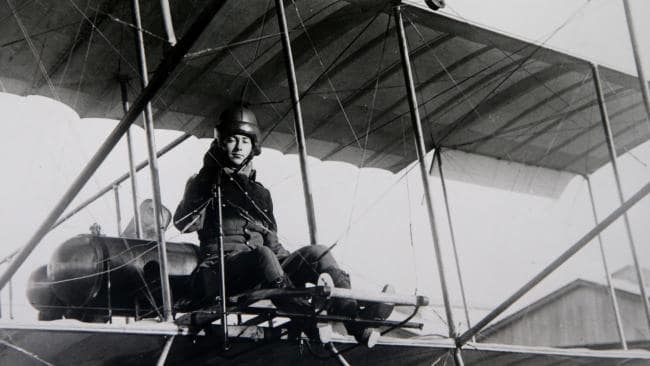
The first Australian airman to die in action was Lieutenant George Merz, one of the first pilot graduates from Point Cook, who was killed in Mesopotamia. During the war 65 Australians became 'aces' by shooting down at least five planes and Lieutenant Frank McNamara, who trained at Point Cook, won Australia's sole air Victoria Cross while serving with No 1 Squadron, AFC.
Throughout this period Point Cook remained the focal point of military aviation in Australia, serving as a flying training unit as well as the assembly point for most AFC units travelling overseas.
Williams and White served in the Middle East and are noted for their distinguished service and special association with RAAF Base Point Cook. Williams is known as the father of the RAAF, for his efforts in promoting air power in Australia’s defence. White wrote Sky Saga, a Story of Empire Airmen in the Second World War and in 1949 was appointed Minister for Air and Civil Aviation in the Menzies Government.
The RAAF, formed on the 31st of March 1921, was the second professional air force in the world, established three years later than the British Royal Air Force. With the outbreak of the Second World War in September 1939, Base Point Cook became the focus of RAAF training in Australia, a role it maintained until the 1990s. The parade ground at Point Cook, completed in 1930, became a prominent feature of RAAF bases elsewhere in Australia. The Air Force Memorial, unveiled on the edge of the parade ground in November 1938, was the first and principal monument to Australian airmen killed in World War I.
After World War II, the base also became home to a range of significant units and facilities, including the RAAF Staff College (1949 to 1960), the RAAF College (later Academy) for training officer cadets from 1947, and the RAAF School of Languages (1950 to 2000).
Point Cook occupies an area of about 250 hectares on the shores of Port Phillip Bay. When the base was established, the proximity of Port Phillip Bay made Point Cook a choice location for seaplanes as well as conventional land planes. Flying was in its infancy and still experimental, so the area's sea-level altitude and absence of hills made it ideal for training and development purposes. The design of the base influenced the planning and development of later military aviation bases in Australia. It includes rare examples of buildings specific to the pre-World War I, World War II and inter war periods. These include the oldest hangars and workshops in Australia, built in 1914; the AFC complex, including the seaplane jetty, dating from 1916 and operating until 1937; the water-plane hangar, built in 1914 and the seaplane complex dating from the late 1920s.
Walking from the car park we did notice this magnificent Prince Skyline GT, possibly belonging to someone who works at the museum. These vehicles were built by the Japanese Prince Motors company back in 1965. They were powered by a 2 litre straight 6 OHC engine, with 3 twin barrel Weber carburettors. Power was delivered to the rear wheels via 5 speed close ratio gear box. A friend of ours, the late Phil Penny, had one at Radschool – nothing could catch him.
Today Point Cook is home to the RAAF Museum. Some of the exhibits include:
The entrance to the museum
The walls of the entrance are covered in numerous exhibits on subjects and periods of historical significance. These exhibits display the history of the RAAF Museum's home at Point Cook and track major developments over the years for Australia’s Aircraft Industry.
The gallery also takes a look at the history of Air Force Chaplains and the RAAF Medical Service and of the invaluable service provided by the WAAF and WRAAF, the Women's Auxiliary Australian Air Force and the Women's Royal Australian Air Force. These organisations form an important part of the RAAF’s history until 1977, when women were transferred to the RAAF.
We noticed one such exhibit that we had to include for our mate Don who just loves getting all dirty and greasy, with a half/nine-sixteen ring spanner in his hands and will most likely print it out and hang it over the mantel piece, that’s if Lyn lets him.
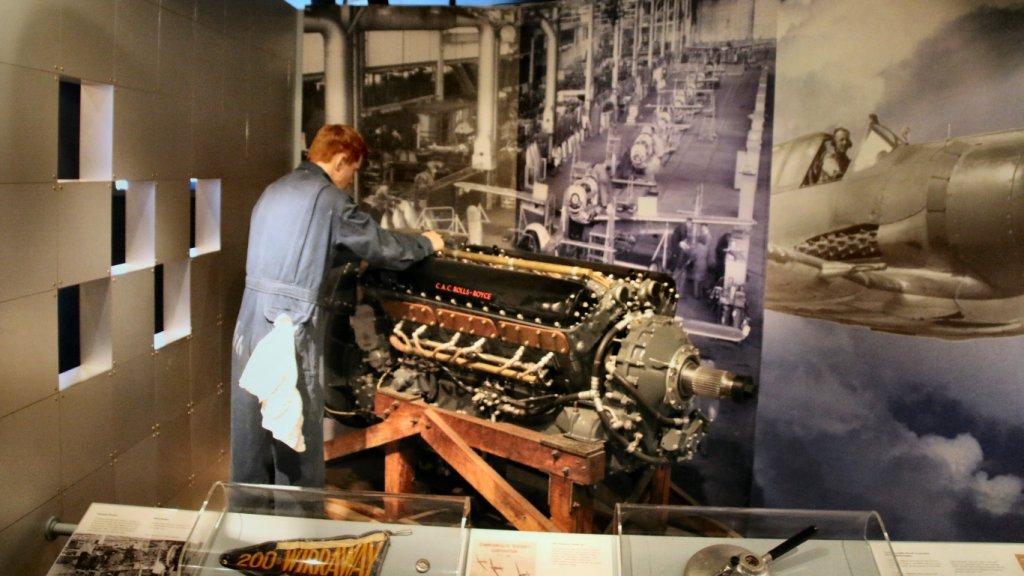
There are also many exhibits that focus on Australian air power contributions to major conflicts, including World War I, World War II, Post World War II conflicts and operations and Australia's history of peacekeeping and civil aid. Lots of reading, don’t forget your glasses.
Every time I start thinking too much about how I look, I just find a pub with a Happy Hour
and by the time I leave, I look just fine.
Produced in the USA prior to World War 2 the Douglas Boston was a light bomber and attack aircraft Powered by two l600hp Wright Cyclone radial engines giving a top speed of 260 knots (480 kph) and could deliver 454 kg of bombs over a range of 1200 kilometres. Only operated by one Squadron in RAAF Service, the initial aircraft for the RAAF were originally ordered by the French Air Force but this order was transferred to the RAF after the fall of France in 1940 and was soon diverted to the Dutch East Indies not long after Japan’s entry into the war. When Java fell into enemy hands the aircraft were then diverted to Melbourne where they were accepted by the RAAF.
The aircraft were then allocated to No 22 Squadron at Richmond and carried out anti-submarine patrols and coastal defence missions. The Squadron was then moved to Port Moresby to attack enemy troops, supply dumps and lines of communication throughout the Buna-Gona region. The Squadron was re-equipped with the later A-20G Bostons in 1943 and then transferred to Goodenough Island. RAAF Bostons often had four fixed forward-firing 0.50-inch machine guns mounted in the nose of the aircraft, the transparent sections of the nose were faired over with painted aluminium and the crew number was reduced from three to two. A couple of the Bostons operated by the RAAF also had a fixed 0.30-inch machine gun in the extreme tail. This gun was operated electrically by the rear-gunner. RAAF Bostons took part in the Battle of Bismarck Sea and contributed in attacks on a large Japanese convoy headed towards Lae in Papua New Guinea
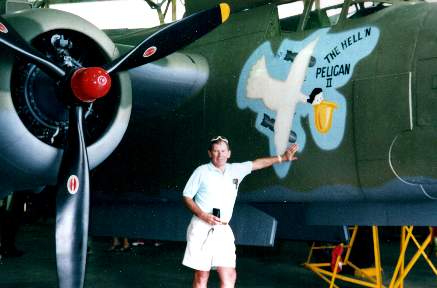
This Boston, A28-8 or ‘J’ for Jessica, was delivered to Melbourne in April 1942 and was sent to No 22 Squadron. When the Squadron was transferred to Goodenough Island, A28-8 carried out operations until it crashed, as a result of battle damage, at Goodenough airstrip on 12 December 1943. It remained at the site until the aircraft was recovered in 1987 along with five other wrecked aircraft from the jungles of Papua New Guinea. A28-8 was taken to Amberley for restoration to static condition and was then transported to the RAAF Museum.
It is pictured here at Amberley back in 2003 with Graeme Benthien.
‘J’ for Jessica, A28-8, is the only survivor of the 69 Bostons operated by the RAAF.
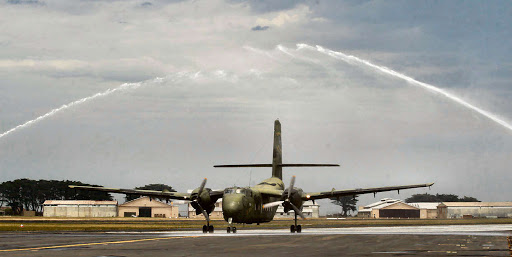
This particular aircraft was accepted by the RAAF and arrived at Richmond in June 1964. In 1967 it was sent to Vietnam but in 1968 it was involved in an accident and shipped back to De Haviland’s in Sydney for repairs. It continued to fly with the RAAF until the whole fleet were retired in 2009. It was then flown to Point Cook where it received a “royal” reception from the fireys before going onto static display.
36 Sqn at Richmond was the first RAAF squadron to operate the Lockheed C-130 aircraft, having obtained their 12 C-130A models back in 1958. The RAAF at the time was the only Air Force, outside of the USA, to operate the C-130. In 1978, after 20 years successful service, 36 Sqn traded in their A models for the H model which were retired in 2006 when 36Sqn began to be equipped with C-17 Globemasters.
Bristol Freighter, E Model Herc, P3 Orion.
These 3 aircraft, which are parked out in the open, are not open for inspection – which is a shame. We don’t know what the Museum’s intentions are with regard to all its large aircraft, but at the moment you can’t even get close to them, let alone look inside. This is a completely different approach to that employed by the Queensland Air Museum where you can get up close and personal and touch the aircraft.
The RAAF had four Bristol Freighter Mk 21Es, (known at Bristol Frighteners), the one at Point Cook, A81-1, arrived on the 14th April 1949, whilst A81-2 and 3 flew into RAAF Base Mallala (Woomera) later that year. In 1951, a fourth Mk 21E, A81-4 arrived at No 34 Squadron.
In October a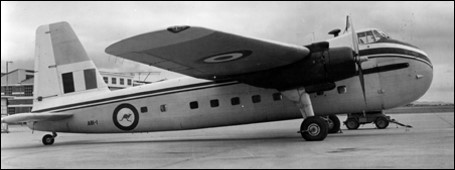 nd
December, engine problems caused A81-1 to make forced landings at
Woomera and Mallala, but little damage occurred. After major repairs and
reconditioning in the second half of 1952, the aircraft was returned to
No 34 Squadron, and in May made yet another forced landing at Woomera
due to engine problems. Several forced landing troubled this aircraft
until in 1967, the aircraft was sold to Air Express, and subsequently
flown to Archerfield. A81-1 was registered VH-SJG and flew freight runs
to Tasmania, Queensland and Papua New Guinea.
nd
December, engine problems caused A81-1 to make forced landings at
Woomera and Mallala, but little damage occurred. After major repairs and
reconditioning in the second half of 1952, the aircraft was returned to
No 34 Squadron, and in May made yet another forced landing at Woomera
due to engine problems. Several forced landing troubled this aircraft
until in 1967, the aircraft was sold to Air Express, and subsequently
flown to Archerfield. A81-1 was registered VH-SJG and flew freight runs
to Tasmania, Queensland and Papua New Guinea.
The aircraft flew its last freight run on the 1st July 1978, after which it was repainted by members of the Friends of the RAAF Museum and put on static display at the RAAF Museum.
C-130E. Delivered from Lockheed in August 1966,
A97-160, like all of the RAAF's C-130E aircraft, entered service with 37
Squadron at Richmond. Du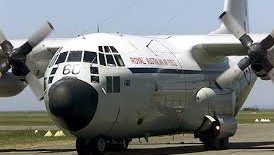 ring
A97-160's 34-year RAAF career, the aircraft flew strategic transport
tasks in support of the Army, Navy and RAAF, and also flew a variety of
notable and special loads, including the Pope-mobile, the Jackson
Pollock painting Blue Poles, and a bull presented as a gift to the
Chinese government.
ring
A97-160's 34-year RAAF career, the aircraft flew strategic transport
tasks in support of the Army, Navy and RAAF, and also flew a variety of
notable and special loads, including the Pope-mobile, the Jackson
Pollock painting Blue Poles, and a bull presented as a gift to the
Chinese government.
This aircraft flew the last flight of the RAAF's C-130Es on th 14th November 2000 under the command of Squadron Leader Mike Beattie, flying from Richmond to Point Cook for delivery to the RAAF Museum. The total airframe hours for this aircraft are 25,833.4.
Orion, P-3C, A9-751 was delivered to Point Cook from Edinburgh on the 16th November 2017. This aircraft was the first P-3C Orion delivered to the Air Force in February 1978 and it arrived in Australia at Edinburgh in May that year.
During its life at Edinburgh, it participated in the aerial search for MH370 which concluded on the 28th APR 2014.
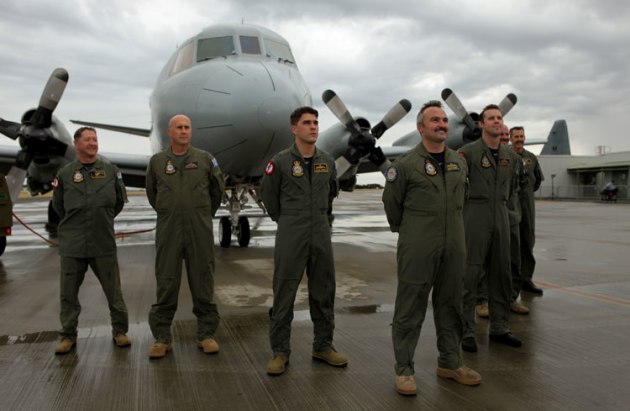
You can see its arrival at Point Cook HERE.
Originally designed by Avro, then built by Hawker Siddeley, this aircraft was ordered new by the Australian Government for the Air Force. It irst flew in February 1968, was powered by Rolls Royce Dart 534 engines and was used as a test bed to certify those engines. The certification process was completed in June 1968 after which it underwent a major overhaul and refit to RAAF. standards. It was accepted by the RAAF in August 1968 and left England on the ferry flight to Australia in September 1968, arriving East Sale shortly after.
It was allocated to the School of Air Navigation, RAAF East Sale and then transferred to the reformed 32 Squadron, East Sale in July 1989. In 1997 32 Sqn leased several Beechcraft B200 and traded those for B350s in 2003. The HS748s were final retired in June 2004. The RAAF operated 8 of these aircraft as nav trainers and 2 as VIP transport aircraft.
601 was flown from Sale down to Point Cook early in 2004 and has been a static display ever since, though it does look a little worse for wear at the moment. Below is what it looks like after a good tub.
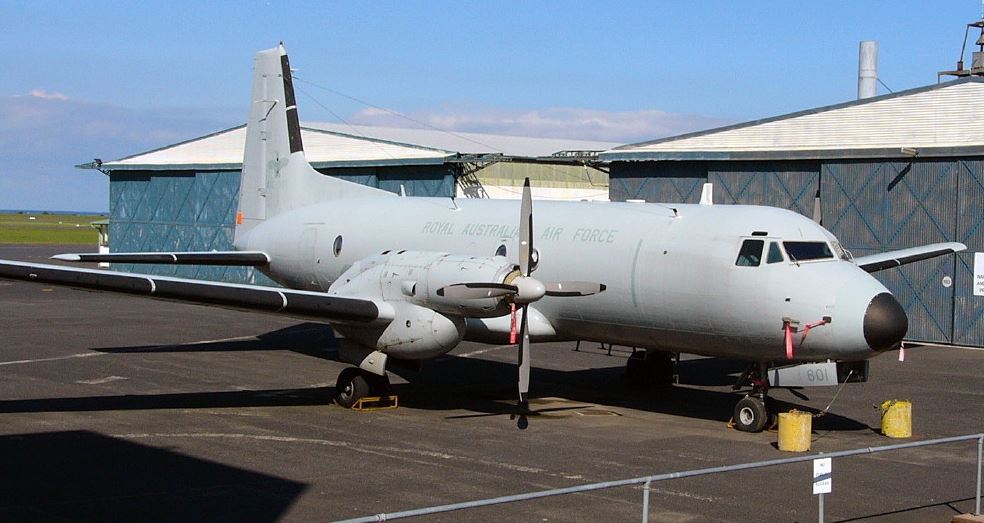
Apart from the aircraft out in the open, the Museum contains many more aircraft in various hangars.
There is the Training Hangar which contains the following aircraft:
The Aircraft display Hangar.
This hangar contains the largest collection of military aircraft and related artefacts in Australia. The public viewing gallery above the Museum’s Aircraft display hangar provides a great view and information on a fascinating cross section of the collection ranging from a GAF Pika, which was the manned version of the Jindivik target drone, through several generations of fighter aircraft, helicopters, trainers and fire fighting vehicles.
This hangar also contains the Supermarine Seagull (Walrus).
The Supermarine Seagull III was a British designed and built amphibian bi-plane. The prototype, the Seagull I, was developed in 1921 and this led to improvements for the construction of 25 Seagull II, in 1922, for use by the Royal Navy and Royal Air Force. Further improvements resulted in the Seagull III, fitted with a Napier Lion V engine, becoming available in 1925. The Royal Australian Air Force ordered six Seagull Mk IIIs (called the Walrus in British service) in 1925 to replace its Fairey IIID seaplanes at a cost of £8,000 ($16,000) each. The aircraft were freighted to Australia arriving in mid-1926 with the first test flight conducted in June of that year. A further three aircraft were ordered in 1927.
The Seagull was constructed from timber and canvas and the Australian version had a radiator modified for tropical usage. The lower wing was set in the shoulder position and the engine was mounted in a nacelle slung from the upper wing; powering a four-blade propeller in ‘tractor’ configuration. The aircraft carried a crew of three with the pilot being a RAAF officer, the observer (navigator) a naval officer and the telegraphist air gunner a naval rating. The Seagulls were allocated to 101 Flight RAAF and three aircraft took part in the Great Barrier Reef Survey during 1926-27 and were based at Bowen in far north Queensland. Due to their size and the logistics / engineering needs the aircraft were based ashore and carried out regular flights over the reef to conduct photographic surveys in support of survey work being conducted by HMA Ships Geranium and Moresby.
The Seagulls were normally located at Point Cook, but following the commissioning of the sea plane carrier HMAS Albatross, in January 1929, they were embarked regularly for training exercises; where the aircraft proved very useful in spotting and signalling corrections, for the fall of shot during gunnery practice firings. The Seagulls were also employed on reconnaissance flights where they were also adept in locating other vessels and signalling, via wireless telegraphy, the location of the ships. The range of the wireless telegraphy equipment was however only 30 kilometres in good weather conditions.
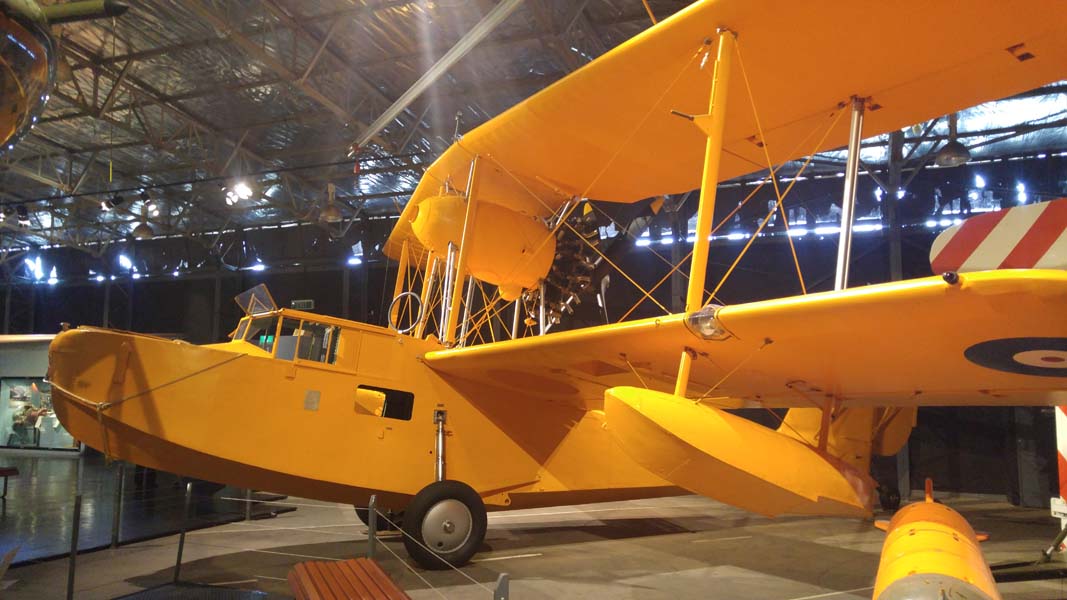
They did have other limitations - due to there being no catapult installed in Albatross the Seagulls had to be craned off for each launching and craned back on once they had landed alongside the ship. Up to six Seagulls could be embarked in Albatross in her hangar and then ranged on her forward deck for impending flights. Thus flying operations were heavily dependent on weather and sea state. Deployments to New Guinea waters where undertaken to test the Seagulls performance in tropical conditions and the aircraft proved repeatedly that it could take off with a full load without difficulty.
On 19 March 1930 Albatross was operating in Tasmanian waters when Seagull A9-4 crashed in Norfolk Bay. The pilot and observer survived the crash but 21 year old Acting Leading Telegraphist Donald McGowan became wedged in the rear of the fuselage and drowned. He was buried with full naval honours in Hobart.
Seagulls could also be embarked in the heavy cruisers HMA Ships Australia and Canberra. Again the aircraft had to be craned on and off the ship for flying operations due to the inability to use a catapult system. In late 1932 both cruisers embarked a Seagull during their deployment to northern waters and the aircraft embarked in Australia conducted extensive photographic reconnaissance of islands between the Torres Strait and the Solomon Islands.
After Albatross was placed in reserve, in April 1933, the Naval Board requested a Seagull III be permanently allocated to each of the heavy cruisers. Two Seagulls were damaged beyond repair while operating from the cruisers during 1934-35; both due to extreme bad weather when lashed down on deck. The last Seagull III was operated by Canberra during 1935-36 and was disembarked at Point Cook on 3 March 1936.
The Seagull III was an effective aircraft for use by warships but were well and truly out of date once the catapult launched Seagull V (Walrus) became available.
The Vampire was initially introduced into RAAF service in 1949 as a single-seat fighter. The two-seat trainer version was ordered in October 1951 to introduce service pilots to jet aircraft. Mainly constructed by de Havilland Aircraft at Bankstown in Sydney, the first dozen fuselages were from British production. The initial order of 36 Vampire trainers was delivered by 1955, however, with the upcoming introduction of jet aircraft to the pilot's course syllabus, an additional 68 Vampire trainers were ordered.
Previously, pilots were trained on Tiger Moths and Wirraways and converted to Vampires at an Operational Training Unit. With the introduction of the Winjeel to replace both of these types and the increasing use of jet aircraft by the RAAF, the Vampire was introduced to the student's syllabus before graduation. In this case the aircraft was operated by No 2 Flying Training School at Pearce.
The first of the new T Mk 35 model trainers entered service in September 1957, and the new training system commenced in early 1958. In 1969, the Vampire was replaced by the Macchi as an advanced trainer. A small number of these aircraft were then operated by No 5 Operational Training Unit during 1970 pending the arrival of two-seat Mirage fighters/trainers.
The Vampire was also operated by the Central Flying School at East Sale to train flying instructors for the RAAF. This unit also used the aircraft in a number of aerobatic teams, including the "Telstars". Another distinction for the type is that the first ejection performed in Australia was from a Vampire trainer. In September 1952, Flying Officer Collins ejected from A79-601, the first production aircraft, prior to its official handover to the RAAF.
The aircraft on display was restored by Maintenance Squadron East Sale in the mid-1990s, and is a composite made from the wings and tail booms of A79-827 and the fuselage pod of A79-616. After display at the RAAF's 75th Anniversary Open Day at East Sale, the aircraft was relocated to Point Cook for display. The aircraft is painted as A79-616, an aircraft operated by Central Flying School, and wears the colours of the "Telstars" aerobatic team.
Flying displays
Where Point Cook differs from other aviation museums, is it conducts regular flying displays. Subject to suitable weather, every Tuesday, Thursday, and Sunday at 1pm there is an interactive flying display at the RAAF Museum. This program is ideal for families and children. It is absolutely free. Bookings are not required.
The flying program runs for most of the year (except over the Christmas and New Year period). Regular aircraft on display include the Winjeel, Harvard (above), CT4A, Sopwith Pup, Tiger Moth, RE8, and the Mustang. Click HERE to see the Winjeels.
The wife said “Watcha doing today?”. I said “Nothing.”
She said, “You did that yesterday”. I said, “I wasn’t finished”.
This aircraft started life as A89-170. It was received from CAC Fisherman's Bend on 23 February 1950 and went straight into storage with No 1 Aircraft Depot Detachment B at Tocumwal, NSW. It was ferried to RAAF Schofields via Fairbairn in August 1950 and was operated by No 78 Wing. It transferred to No 2 Operational Training Unit in April 1952 and then No 23 (City of Brisbane) Squadron in October 1953 where it had a short service career before returning to storage with 3 AD in October 1956.
In 1959 it was approved for disposal but subsequently withdrawn and held by the Queensland Flight of the Air Training Corps as an instructional aid before being issued to the RAAF Museum in September 1970, arriving dismantled where it was restored to an almost flyable condition. It was then placed on display in a semi-complete condition in the late 1970s until 1990.
Restoration to flying condition commenced in 1991 and was completed in early 1999, the aircraft was painted in the markings of P-51D Mustang A68-750. It had its first public outing at the International Airshow at Avalon.
You can see more info on the Museum HERE.
The Museum is always looking for people with a lot, or even a little, spare time to join our wonderful team of Volunteers. An understanding of Air Force history is helpful but not essential. Reliability, ability to work as part of a team and enthusiasm are important.
Our volunteers are vital to the smooth running of the RAAF Museum. They take part in a range of activities including:
-
acting as tour guides
-
assisting visitors
-
helping in research
-
assisting with technical projects such as restoration and aircraft cleaning.
Volunteer information sessions are held three times a year in March, July, and October. At these sessions, they provide an overview of different areas of the RAAF Museum and the opportunities that are available. After that, if you are interested in volunteering, there is an induction session held three times a year in April, August, and October.
If you would like to offer your time as a Volunteer or to find out more, please get in touch. Phone the Volunteer Coordinator on (03) 8348 6341 during business hours or email then at RAAF.MuseumInfo@defence.gov.au with the word "volunteer" in the subject line.
Friends
The Friends of the RAAF Museum are a vital ingredient in the future development of the Museum. Friends can be active or financial members.
There are many benefits to becoming a Friend of the RAAF Museum, including:
-
a quarterly publication, Aerogram, updates Friends on all Museum news
-
a free Museum calendar each year
-
free admission to Museum air displays
-
15% discount in the Museum Shop.
You'll also have the satisfaction of being part of one of Melbourne's most popular visitor attractions and home to one of the best collections of historical aircraft in the world.
Active Friends
Friends of the RAAF Museum are the public face of the museum as volunteer Host Officers. Host Officers work in the main display area and act as tour guides for group bookings. Host Officers also assist visitors by answering questions, pointing out details of exhibits and directing visitors throughout the Museum and the RAAF Base.
The Museum also relies on its Friends behind the scenes. Friends volunteer to assist with many aircraft restoration projects and conduct a great deal of research. Volunteers greatly reduce the time these projects take by donating their time. They are also invaluable when the time comes for major activities, such as flying displays.
Volunteers at the RAAF Museum also participate in Training Days. These are an opportunity for qualified Museum staff and special guests to provide information to assist volunteers with their duties. The Museum provides training on topics as diverse as aircraft handling, first aid, and curatorial practices.
Supporting Members
Whether due to distance or a busy schedule, the Museum understands that not everyone who is interested in the RAAF Museum is able to spend time at the Museum.
Because of this, the Friends of the RAAF Museum also have Supporting Members, who contribute an annual fee that helps fund the activities of the Museum in all areas, from stores and aircraft acquisitions to restoration projects.
Want to know more?
If you would like to know more about becoming involved in the RAAF Museum as a Financial or Supporting Member, please get in touch.
Email RAAF.MuseumInfo@defence.gov.au or phone the Volunteer Coordinator (03) 8348 6341 to request a copy of the Friends of the RAAF Museum brochure.
